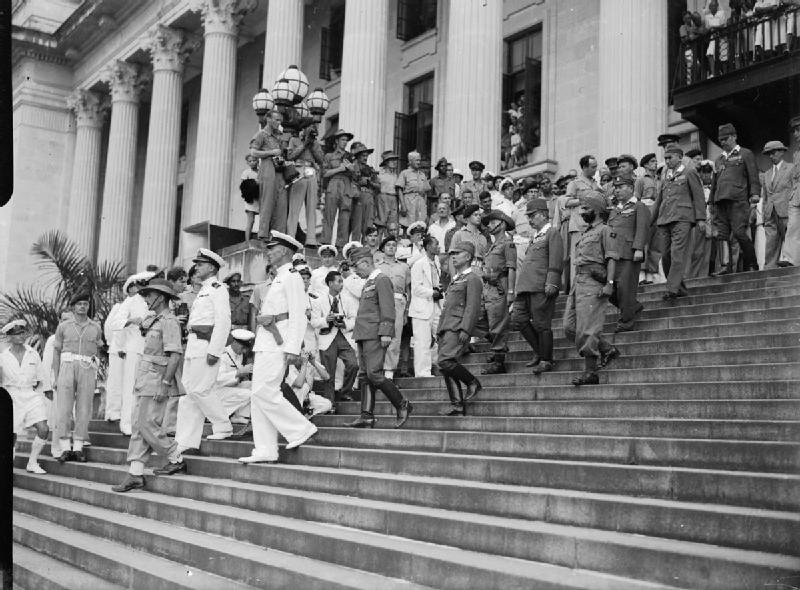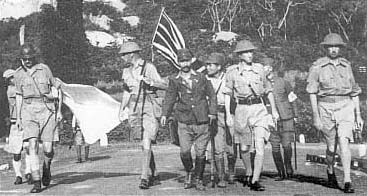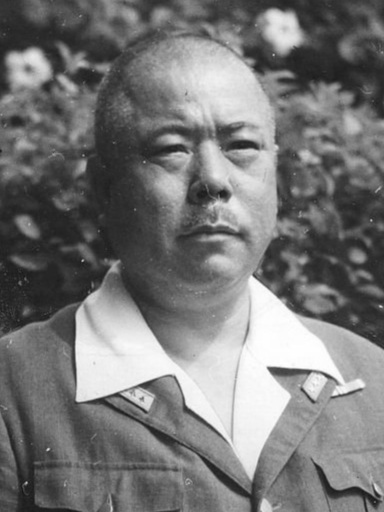There were shortage of FOOD:
The problem was terrible. The rice-producing countries has no extra food to sell. The war has also disrupted the harbour as sunken ships has blocked the harbour. This has resulted the difficulty for shipping food to Singapore.
The Japanese delegation leaves the building after the surrender ceremony on 12th September 1945.
The Japanese occupation was considered as the darkest period of Singaporean history.
After the British had surrendered, the Japanese named Singapore as :
Syonan-to (昭南島 Shōnan-tō, "Light of the South".
The Japanese police was also known as the kempetai.
Commoners were made to bow to them as they passed, if not, they would be punished by
kicking or hitting them.
They were biased against the Chinese.
For instance, the Sook Ching Massacre, including civilians who had donated to charities to aid the war effort in China, claimed between 25,000 and 50,000 lives in Malaya and Singapore.
The local people lived in fear as they did not know who worked for the Japanese
and who did not as the japanese had many secret informers all over the island.
The Japanese wanted to 'purify' the commoners and not have 'unloyals' going against them, therefore they introduced a system called Sook Ching (translated purge through purification). There were also many secret informers all over the island.
When asked by the Japanese to select and 'accuse', they would simply point to anyone.
These people were rounded up and taken to a deserted place to be shot or bayoneted.
The Japanese were extremely cruel at that time,
they torture their prisoners, even using them as their bulleyes for their pratice.
Some of the captured ones were never seen by their families again.
Resources were scarce during the Japanese Occupatiom.
The price of rice increased from five dollars to five thousand dollars.
The Japanese issued ration cards to control the amount of resources the population received: adults could purchase 4.8 kg of rice per month, and children 2.4 kg.
They issued the Banana Notes as their main currency.
Life was hard then, many people suffered and died during the Japanese Occupation.
On 6th & 9th of August, the US dropped two atomic bombs at Japan's two cities.
Eventually, the Japanese surrendered at 15th August 1945,
and the Japanese Occupation came to an end :D 
 A cheering crowd welcome the return of British forces on 5th September 1945.
A cheering crowd welcome the return of British forces on 5th September 1945.
This is a video of World War 2.
This is a video of the Battle Of Singapore.



ps: truce - a temporary stoppage of a war or any wared conflict.
Percival led by a Japanese officer, walks under a flag of truce to negotiate the capitulation of Allied forces in Singapore, on Feburary 15, 1942. It was the largest surrender of British-led forces in history.
British Surrender - Yamashita (seated, centre) thumps the table with his fist to emphasize his terms -- unconditional surrender. Percival sits between his officers, his clenched hand to his mouth.

Lieutenant General Arthur Ernest Percival
26 December 1887
to
31 January 1966
Percival decided to surrender to the Japanese as he did not want civilians to suffer anymore.

